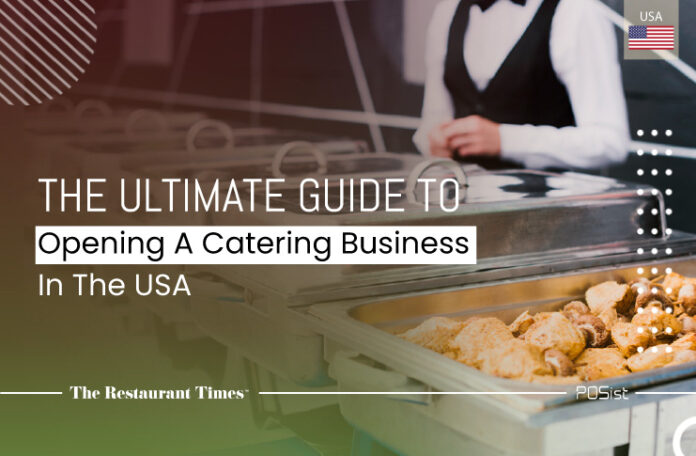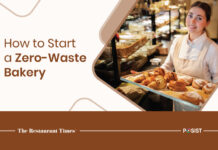If you have a flair for cooking and want to monetize your passion and skills, you can easily combine the two to start your very own catering business in the USA.
The catering industry includes companies that provide individual event-based food services. There can be companies that cater to larger groups, or if you are starting out, you can start small for a party of 20 or 50 people depending on the experience, equipment, and capital you have. Some examples of events catered by industry establishments are graduation parties, wedding receptions, housewarming parties, business/corporate luncheons, etc.
In 2019, catering companies in the US earned $11 billion in revenue 2019. Those who are into the catering business industry can easily expect to make $30,000 – $80,000 annually.
Steps To Start A Catering Business In The USA
Catering doesn’t always mean providing lunch or organizing a party of 200+ people at a big event. You can start a small catering business even if this is your first time. But how do you create a small catering business?
We have compiled a list of 6 steps to help you get started with your own catering business in the USA.
1. Finalize Your Business Name & Business Type
You will need to do preliminary research to finalize a blueprint of what your business will be.
Once you know the kind of catering business you want to start, you can focus on choosing a name for your catering business and defining the entity for it as well.
The name you choose must also be available in the state where you plan to open your business. In most states in the USA, you can quickly check the business name’s availability online with the Secretary of State.
Here are a few questions you will need answers to right from the get-go to find your speciality.
- What type of food will you serve?
- Will you serve everyone or consider going deep in a niche market like vegan cuisine or gluten-free?
- What functions will your business cater to?
- Cocktail parties, mini corporate or business luncheons, wedding showers, and baby showers are some of the smaller functions that you can opt for when you’re just starting out with your catering business.
- How many functions can you take up in a specific time period?
- You will need to decide what your capacity is. If you consider this a full-time opportunity, you will have the availability to do multiple functions per week. But if you are working on this part-time or it is just a side hustle, you will have to fix your capacity.
2. Licenses And Permission
Every state has a separate set of guidelines and policies for licensing and permits for catering companies. Depending on the state you want to start your catering business in, you may or may not be allowed to use your kitchen and equipment to start a small catering business. Every state also has different requirements for liquor licenses.
Here’s a list of licenses and permits that are common across all states –
- General business license
- Zoning permit
- Health permit
To learn about licenses and permits that you need to start a catering business, you will need to contact the Secretary of State and the local health department.
3. Decide The Location
After you have gained access to the licenses and permits that pertain to you, you will need to finalize the location from where the business will operate. This will depend on the local laws concerning the catering businesses and zoning regulations.
If your catering business mainly involves transporting to the event’s location, why is it essential to finalize the location?
Some states do not allow you to prepare meals and operate out of your home kitchen in the USA. So, in such a scenario, there are usually two options –
- Rent a commercial kitchen: This increases your operating costs and will require transportation facilities and equipment to deliver food to the location. However, it also gives you flexibility. You will be able to prepare meals for your customers irrespective of where they choose to organize the event and do it in larger quantities than you would if you were operating from your home kitchen.
- Prepare food on-site: This makes you heavily dependent on your customers’ facilities for the meal prep. You will only be able to serve customers who rent or own places with kitchens for their event and limit the locations you can serve. This will, however, help you save on some operating costs.
Finalize your location based on the kind of food you’re going to serve and the audience you’re going to cater to. Then choose the location and plan according to your decided budget.

4. Buying Equipment And Sourcing Your Raw Material
To set up your kitchen, whether on-site or commercial kitchen, your equipment needs would depend on the scale of your business and customers.
These are some of the equipment that you will need to invest in to get started –
- Fryers & refrigerators
- A modular kitchen setup with multiple burner stoves
- Stainless steel prep tables
- Cooking oven
- Serving equipment
- Hot & cold beverage station
- Disposable containers for storage
- Garbage bins
Use these to get started on the list of items that you will need to get your business running.
You can easily source your raw materials and products from local farmers or a supply distribution agency. Start growing your network of supply vendors and agencies. Invest in stock and inventory management software to easily keep track of your raw produce.
5. Creating Your Menu & Hiring Right
If you have thought about opening your catering business, the first thing that would have come to your mind is the kind of food that you will serve. Once you have done your preliminary research, finalized your business type, and acquired all the necessary licenses and paperwork, you must sit down and put your dream menu on paper.
You can always keep customizing it and keep it fresh by making changes as and when you go; you will need a list of options to get you started with the supply orders and preparation process.
Based on your menu, you will also understand the kind of marketing that you will need to do and define your target audience with much more clarity.
While working on your menu, you can create a quick marketing strategy upfront to spread the word about your new catering business. This field also heavily depends on word-of-mouth marketing. Still, a few inexpensive techniques such as keeping the menu and prices up-to-date on the website, posting a good photo gallery of the food you serve, and curated reviews on social media will help you get a good head start.
Once your menu is sorted, you will have to hire the right people to help you execute your business effortlessly. At the end of the day, the catering business is not just about food but also about teamwork and smooth execution. Maintain a uniform and ensure that your staff is well-trained. You can start your catering business with around 10 people, including a head chef, junior chef, other cooks, menu designer, and delivery.
6. Get Insured
Business insurance will protect your catering company from getting sued if some mishap occurs. Buy as many types of insurance as you need to protect your assets and shield your business and employers from getting sued.
These are some types of insurance that you can consider –
- General insurance
- Commercial automotive insurance
- Commercial property insurance
- Unemployment insurance
- Wrongful termination insurance
- Key person insurance
Catering isn’t an easy business, especially in the USA, but if done right, it is one of the most sought-after industries because people will always have a reason to celebrate or come together to have a nice meal with friends and family.

















